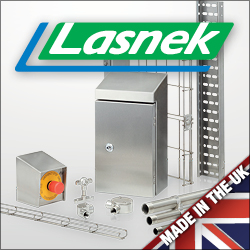
Posted to News on 25th May 2022, 13:34
TE Connectivity and Phoenix Contact announce joint development agreement

TE Connectivity (TE) will jointly develop with the Phoenix Contact new Single Pair Ethernet (SPE) M12 hybrid connectivity. The M12 connectors align with the hybrid format specified by the IEC 63171-7 standard, which the IEC initiated under the guidance of TE in early 2021.
The agreement brings together innovation from two global companies with high expertise in connectivity with the shared goal of driving market adoption of SPE in the industrial space, reflecting the support for the IEC 63171-7 standard that exists among key trade groups and the industry as a whole.
“As a founding member of the SPE Industrial Partner Network, TE is committed to bringing the powerful advantages of SPE to industrial networks,” said Priyank Kishor, global product management leader at TE Connectivity. “We now have a shared roadmap for how we will get there: the development of hybrid interfaces that easily integrate SPE with existing infrastructure. The collaboration with Phoenix Contact will allow us to work together to identify solutions that will make widespread implementation of SPE possible.”
The IEC 63171-7 standard specifies hybrid interfaces with SPE and power contacts in the M12 format. The standard includes seven codings for various applications, covering a performance range of 8-16 A and 50–600 V. Whereas current power over data line (PoDL) concepts are restricted to 50 W at the device level, SPE M12 hybrid connectors also work for high-power applications such as IIoT devices, robotic systems, servo drives and small three-phase drives. This universal standard for SPE implementation moves the industry closer to bringing ethernet capabilities to the edge of the network and making smart manufacturing a reality.
“The partnership with TE Connectivity serves as the basis for the successful development and global marketing of the SPE M12 hybrid connector,” said Torsten Janwlecke (pictured), member of the Phoenix Contact management board and president of the Device Connector division. “At the device level, the new connectors enable one-cable solutions for data and power and valuable cost and space savings. With that, we are reaching the next milestone for successfully establishing Single Pair Ethernet at the field level.”


















